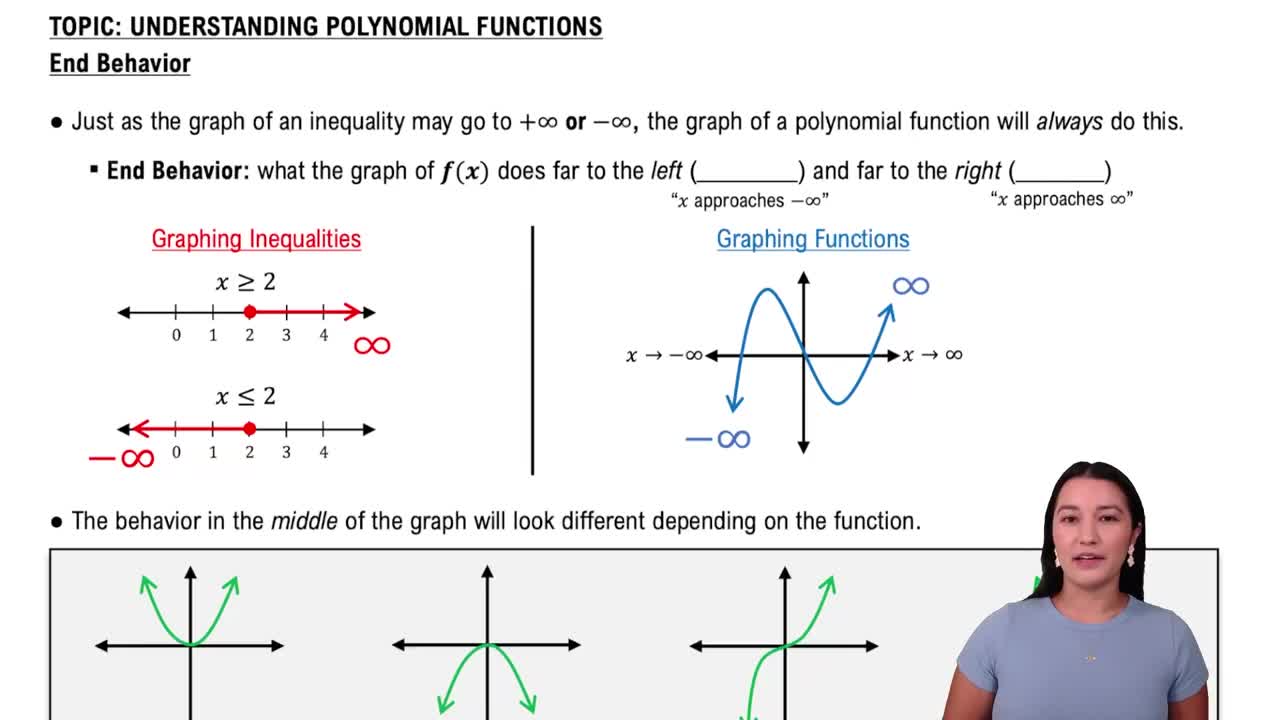Here are the essential concepts you must grasp in order to answer the question correctly.
Even Functions
A function is classified as even if it satisfies the condition f(-x) = f(x) for all x in its domain. This means that the graph of the function is symmetric with respect to the y-axis. For example, the function f(x) = x^2 is even because f(-x) = (-x)^2 = x^2.
Recommended video:
Odd Functions
A function is considered odd if it meets the condition f(-x) = -f(x) for all x in its domain. This indicates that the graph of the function is symmetric with respect to the origin. An example of an odd function is f(x) = x^3, as f(-x) = (-x)^3 = -x^3.
Recommended video:
End Behavior of Polynomial Functions
Neither Even Nor Odd Functions
A function is classified as neither even nor odd if it does not satisfy the conditions for either classification. This means that the function does not exhibit symmetry about the y-axis or the origin. For instance, the function f(x) = x + 1 is neither even nor odd, as f(-x) = -x + 1 does not equal f(x) or -f(x).
Recommended video:
End Behavior of Polynomial Functions
 Verified step by step guidance
Verified step by step guidance Verified Solution
Verified Solution



 5:2m
5:2m